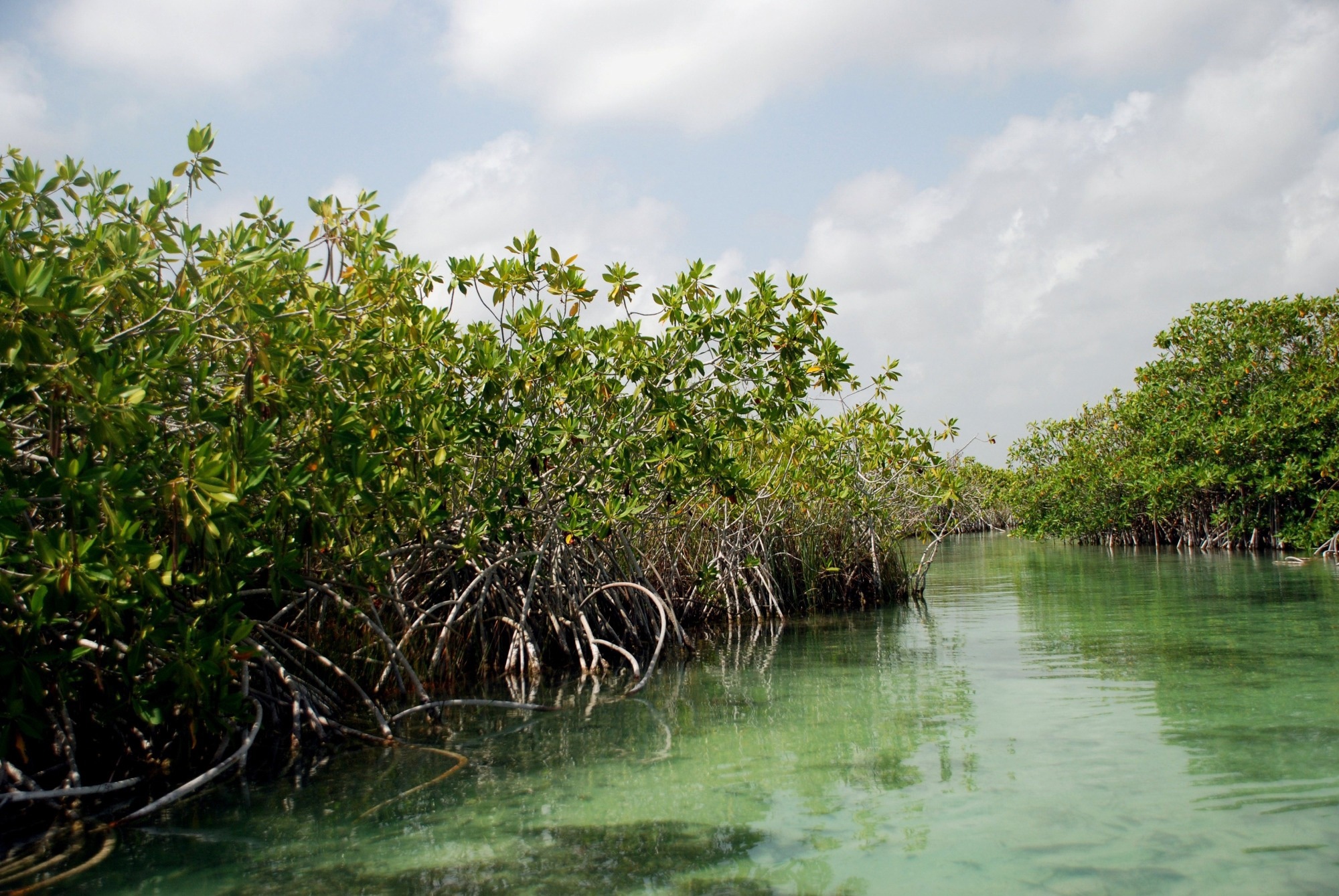Reviewed by Mila PereraSep 19 2022
Mangrove forests have been silently keeping carbon out of the Earth’s atmosphere for the past 5,000 years, according to researchers, who have discovered a new reason to preserve them.

Image Credit: Shutterstock.com/wayak
Mangroves can survive in environments other plants cannot, such as salty coastal waters. When the tide is high, some species’ air-conducting, vertical roots function like snorkels, giving the impression that the trees are floating on stilts.
A research team led by UC Riverside and UC San Diego was formed to study how maritime mangroves off the coast of La Paz, Mexico, take in and release components such as nitrogen and carbon, a process known as biogeochemical cycling.
The scientists also intended to identify the types of bacteria and fungi flourishing there since microbes are primarily responsible for these activities.
The researchers anticipated finding carbon in the peat layer beneath the forest, but they were unprepared to find carbon that was 5,000 years old. The journal Marine Ecology Progress Series has recently published this finding and described the bacteria they discovered.
What’s special about these mangrove sites isn’t that they’re the fastest at carbon storage, but that they have kept the carbon for so long. It is orders of magnitude more carbon storage than most other ecosystems in the region.
Emma Aronson, Study Co-Senior Author and Environmental Microbiologist, University of California, Riverside
Peat is a mixture of submerged sediment and partially decomposed organic material that lies beneath the mangrove plants. The peat layer stretched 10 feet below the coastal water line in some of the study's studied regions.
The team did not find any fungi living in the lowest peat layer, likely since oxygen rarely reaches it. Fungi are typically present in almost every ecosystem on Earth; however, most fungi specializing in dissolving carbon compounds need oxygen to survive. The group may investigate the lack of fungi in mangrove peat research in the future.
More than 1,100 different bacterial species that consume and excrete various chemical substances can be found dwelling beneath mangroves. Many of them work in conditions with little or no oxygen. These bacteria are, however, ineffective in decomposing carbon.
The deeper you go into the peat soils, the fewer microorganisms you find. Not much can break down the carbon down there, or the peat itself, for that matter. Because it persists for so long, it’s not easy to make more of it or replicate the communities of microbes within it.
Mia Maltz, Study Author and Microbial Ecologist, University of California, Riverside
On Earth, other ecosystems have carbon at least as old as or even older. Examples include the permafrost in the Arctic and Antarctic regions, where the ice has still not thawed and permitted gases to escape.
Scientists are currently scouting mangrove research locations in Hawaii, Florida, and the Yucatan Peninsula of Mexico, to see if they have similar samples of ancient carbon.
These sites are protecting carbon that has been there for millennia. Disturbing them would cause a carbon emission that we wouldn’t be able to repair any time soon.
Matthew Costa, Study First Author and Coastal Ecologist, UC San Diego
The greenhouse effect, and thus rising temperatures, are increased due to carbon dioxide. According to Costa, the mangroves should be left undisturbed to keep this issue from worsening.
Costa concludes, “If we let these forests keep functioning, they can retain the carbon they’ve sequestered out of our atmosphere, essentially permanently. These mangroves have an important role in mitigating climate change.”
Journal Reference
Costa, M. T., et al. (2022) Baja California Sur mangrove deep peat microbial communities cycle nitrogen but do not affect old carbon pool. Marine Ecology Progress Series. https://www.int-res.com/abstracts/meps/v695/p15-31/